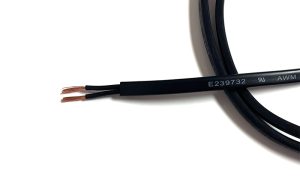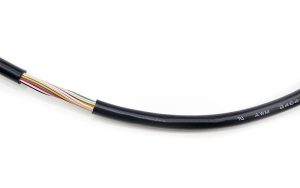In the world of electrical and electronic engineering, safety standards are paramount. One such standard, UL2464, plays a critical role in ensuring the safety and reliability of multi-conductor cables used in various applications. This article delves into the intricacies of it, exploring its significance, applications, and how it integrates with other safety regulations like CSA, VDE, CCC, and CE.
What is UL2464?
It is a standard set by Underwriters Laboratories (UL), a global safety certification company that has been at the forefront of product safety for over a century. The UL2464 standard specifically applies to multi-conductor cables used for internal wiring of appliances and electronics. These cables are often found in industrial control systems, data communication networks, and other environments where reliable performance and safety are crucial.
The “UL” marking on a cable indicates that the product has been tested and meets the stringent safety requirements established by UL. For safety-compliant cables, this means the product has undergone rigorous evaluation for factors such as insulation quality, fire resistance, and overall durability. The “UL2464” marking on the cable’s jacket surface serves as a declaration that the cable is qualified to meet these safety standards, offering peace of mind to manufacturers, installers, and end-users.

Technical Specifications of UL2464
UL2464 cables are typically multi-conductor cables, which means they consist of two or more insulated conductors enclosed within a common outer jacket. These cables are often constructed using PVC (Polyvinyl Chloride) insulation and a PVC jacket, which provides flexibility, durability, and resistance to environmental factors like moisture and chemicals.
The standard specifies various parameters, including:
- 전압 등급: UL2464 cables are generally rated for a voltage of 300V. This rating ensures that the cable can safely handle the electrical load within its intended application without risk of insulation breakdown or fire hazards.
- Temperature Range: These cables are designed to operate within a temperature range of -20°C to 80°C, making them suitable for use in a wide range of environments, from cold industrial settings to warmer indoor applications.
- Conductor Material: The conductors within they are typically made of stranded copper. Stranded copper offers excellent conductivity and flexibility, which is essential for applications where the cable needs to be bent or routed through tight spaces.
- Insulation and Jacket: The PVC insulation and jacket provide excellent electrical insulation, mechanical protection, and resistance to abrasion, chemicals, and oils. The jacket also helps to protect the internal conductors from physical damage and environmental factors.
- 차폐: In some applications, they may include shielding, such as an aluminum foil shield or a braided copper shield. Shielding is used to protect the cable from electromagnetic interference (EMI) and radio frequency interference (RFI), which can cause signal degradation in sensitive electronic circuits.
Applications of UL2464 Cables
They are versatile and can be used in a wide range of applications. Some of the most common uses include:
- Data Communication: These cables are widely used in data communication systems, including computer networks, telecommunication systems, and industrial control systems. The multi-conductor design allows for the transmission of multiple signals simultaneously, making them ideal for complex data communication tasks.
- Internal Wiring of Appliances: They are often used for the internal wiring of appliances, including home appliances, office equipment, and industrial machinery. The cables’ durability and safety features make them suitable for use in devices that require reliable performance and adherence to safety standards.
- Control Systems: In industrial settings, they are used in control systems where precise control of machinery and equipment is essential. The cables’ ability to handle multiple signals and their resistance to environmental factors make them ideal for these applications.
- Instrumentation: They are also used in instrumentation systems, where they transmit signals from sensors and other measuring devices to control panels and monitoring systems. The cables’ shielding options help to ensure accurate signal transmission in environments with high levels of EMI.
- 의료 장비: The stringent safety requirements of it make these cables suitable for use in medical equipment, where safety and reliability are critical. The cables are used in devices such as diagnostic machines, patient monitoring systems, and laboratory equipment.

The Importance of UL2464 in Global Markets
As the global economy becomes increasingly interconnected, the need for products that meet multiple safety standards has grown. Manufacturers that produce UL2464-compliant cables can confidently market their products in a wide range of countries, knowing that their cables meet the stringent safety requirements of multiple regions.
For example, a manufacturer producing cables that also meet CSA, VDE, CCC, and CE standards can export their products to North America, Europe, and Asia with minimal modifications to their designs. This ability to meet diverse safety requirements not only opens up new markets but also enhances the manufacturer’s reputation for producing high-quality, safe products.
How to Ensure Compliance with UL2464
For manufacturers and suppliers, achieving compliance with this safety standard involves several key steps:
- Design and Material Selection: The first step is to design the cable using materials that meet the relevant requirements. This includes selecting appropriate conductor materials, insulation, and jacket materials that provide the necessary electrical and mechanical properties.
- Testing and Certification: Once the cable design is finalized, it must undergo rigorous testing to ensure it meets the necessary criteria. This testing is typically conducted by an accredited laboratory, such as UL, which evaluates the cable’s performance in areas such as insulation resistance, voltage rating, and fire resistance.
- Marking and Documentation: Cables that meet the standard must be appropriately marked with the specific designation on their jacket surface. This marking indicates that the cable has been tested and certified. Additionally, manufacturers must maintain detailed documentation that supports compliance, including test reports and material specifications.
- Ongoing Compliance: Ensuring compliance is an ongoing process. Manufacturers must ensure that their production consistently produces cables that meet the required standards. This may involve regular testing of production samples, quality control inspections, and periodic audits by UL or other certification bodies.
The Future of UL2464 and Cable Safety
As technology continues to evolve, the need for safe and reliable cables will only grow. The UL2464 standard, with its emphasis on safety and performance, will remain a critical component of cable design and manufacturing. However, as new materials and technologies emerge, the standard may evolve to incorporate new requirements and testing methods.
For manufacturers, staying ahead of these changes will be essential. This means not only maintaining compliance with existing standards but also investing in research and development to create cables that meet the safety needs of tomorrow’s technologies.
In conclusion, UL2464 is more than just a marking on a cable. It represents a commitment to safety, quality, and reliability. Understanding the significance of these standards and how they integrate with other safety guidelines allows manufacturers to ensure their products meet the highest levels of safety and performance. Whether used in data communication networks, industrial control systems, or medical devices, cables bearing these standards are trusted to perform in demanding applications. As global safety standards continue to evolve, these benchmarks will remain vital for trusted cable performance.




